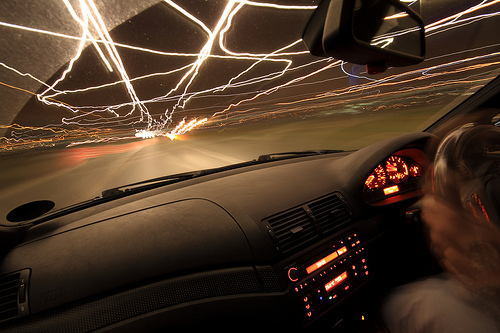Rearview cameras more effective than parking sensors, according to IIHS study
Rearview car cameras are more effective than parking sensors at preventing drivers from hitting children or objects while backing up their vehicles, according to an Insurance Institute for Highway Safety study. In a test of a group of volunteer drivers, IIHS found that cameras alone were more efficient than sensors, or even sensors and cameras together, reports the Los Angeles Times.
The news is significant for child safety. Currently, nearly 300 people are killed and 18,000 are injured each year when drivers accidentally back into them, according to Motor Trend. Children are at greater risk because of their smaller size.

Image from Tiggy.
“Right now cameras appear to be the most promising technology for addressing this particularly tragic type of crash, which frequently claims the lives of young children in the driveways of their own homes,” says David Zuby, who is executive vice president and chief research officer for IIHS.
IIHS studied 111 drivers driving a 2013 Chevrolet Equinox LTZ — the car was picked because it’s a popular mid-size SUV that, according to a separate study, has an “averaged-sized blind zone” — in a parking lot at the StubHub Center in Carson, California. Drivers were informed that they were testing the car’s information and entertainment systems, and were first asked to fulfill basic tasks such as parking and using the car’s navigation display.
Later in the study, the drivers were required to back out of a parking lot and return to their personal car’s parking space. As the drivers backed out, a cutout of a child-size crash test dummy was put in their path. In certain cases, a non-moving dummy was placed behind the car; in others, a radio-operated dummy was placed in the way of the SUV.
While the majority of the drivers averted the moving crash test dummy, the most dangerous scenario involved the non-moving dummy. “The proportion of drivers who collided with the stationary object was four times as large as the proportion that collided with the moving object,” reported the Times. Drivers who only used the rearview camera had the lowest number of collisions with the stationary object — 56% of them, in fact, hit it.
Those using only parking sensors had a lower success rate: parking sensors alone aided only one in 16 drivers in averting a crash. Meanwhile, 100% of the drivers without the technological benefits of either car sensors or rear cameras hit the stationary object. The study discovered that rearview cameras reduced the blind zone by 90% on average. Cars outfitted with both cameras and sensors provided just 2-3 percent better visibility, according to Motor Trend.
Still, the cameras are not foolproof. As Automobile Magazine notes, “even when the technology is used in accordance with rearview mirrors, side mirrors, and rear glances, it isn’t perfect. Blind zones near the bumpers remain problematic, and the cameras are not reliably effective in varied lighting conditions like shade.”
The study’s implications are notable for car manufacturers. Automaker Honda has announced it will include rearview cameras on all Honda and Acura cars by the 2015 model year, and most automakers already offer the option.
Category: Automotive, Pedestrian safety, Road safety















